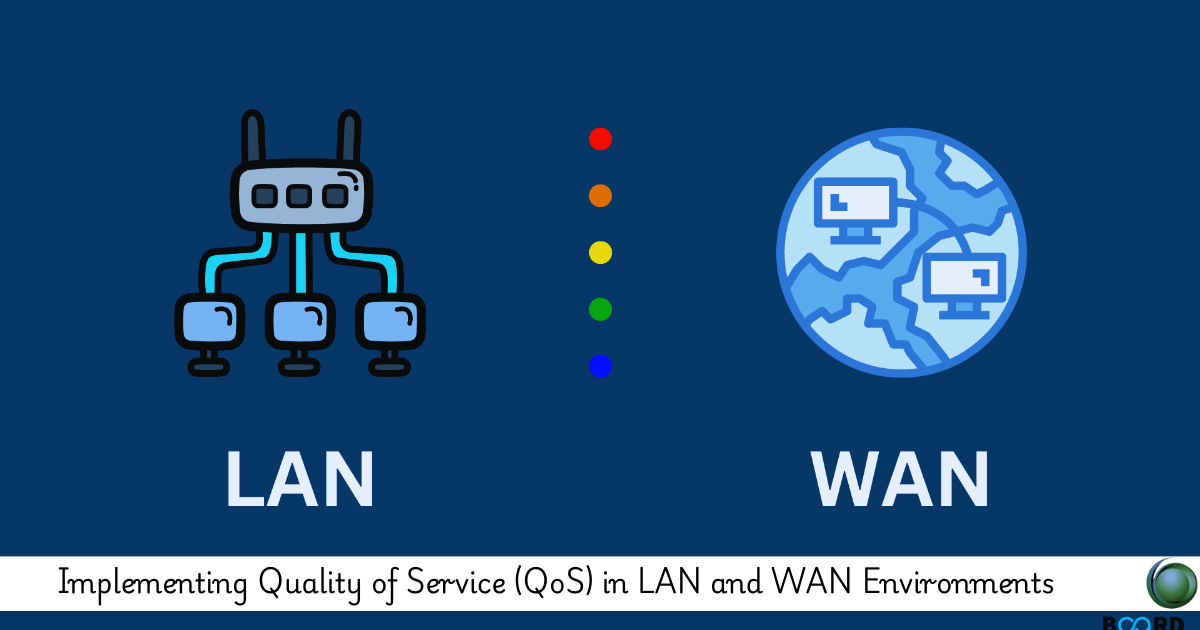Description
Introduction of QoS in LAN &WAN Environments
Quality of Service (QoS) is a critical aspect of network management, especially in Local Area Networks (LAN) and Wide Area Networks (WAN), where ensuring optimal performance for voice, video, and data applications is essential. Implementing QoS in both LAN and WAN environments helps prioritize traffic, reduce congestion, manage bandwidth, and enhance the overall user experience for latency-sensitive applications. This course provides network professionals with the skills and knowledge to implement QoS effectively in both LAN and WAN environments, ensuring that performance requirements are met even in complex and large-scale networks.
Prerequisites
- Basic understanding of networking concepts, such as IP addressing, routing, and switching.
- Familiarity with QoS principles like traffic classification, traffic policing, and queue management.
- Hands-on experience with network devices and their configuration.
- Understanding of network performance metrics like latency, jitter, and bandwidth.
Table of Contents
1. Introduction to QoS Concepts
1.1 What is QoS?
1.2 The Importance of QoS in Network Traffic Management
1.3 Key QoS Components: Classification, Marking, Scheduling, Policing, and Shaping
2. QoS Architecture for LAN and WAN
2.1 LAN QoS: Challenges and Considerations
2.2 WAN QoS: Importance for Wide Area Traffic Optimization
2.3 QoS Models for LAN and WAN: DiffServ, IntServ, and MPLS
3. Traffic Classification and Marking
3.1 Understanding Traffic Classification
3.2 Traffic Marking with Differentiated Services Code Point (DSCP)
3.3 Implementing QoS Marking in LANs and WANs
4. Managing Network Congestion: Queuing and Scheduling
4.1 Queuing Techniques: FIFO, Priority Queuing, and Weighted Fair Queuing (WFQ)
4.2 Traffic Shaping and Policing for Congestion Management
4.3 Implementing Scheduling Algorithms for Prioritizing Traffic
5. Implementing QoS in LAN Environments
5.1 QoS in Ethernet Networks: VLANs and 802.1p Priority Tagging
5.2 Configuring QoS on Cisco Switches: VLAN-Based QoS
5.3 QoS for Wireless LANs (WLAN): Managing Voice and Data Traffic
6. Implementing QoS in WAN Environments
6.1 QoS Over MPLS Networks: MPLS Traffic Engineering
6.2 WAN Optimization and QoS for Satellite, Cellular, and Broadband Links
6.3 Configuring QoS on Routers and Firewalls for WAN Traffic
7. Network Traffic Policing and Shaping
7.1 Traffic Policing: Definition, Configuration, and Use Cases
7.2 Traffic Shaping for Bandwidth Management in WAN
7.3 Configuring Policing and Shaping on Routers and Switches
8. Optimizing QoS for Voice and Video Traffic
8.1 QoS for VoIP: Prioritizing Voice Traffic(Ref: Advanced Quality of Service (QoS) Techniques for High-Performance Networks)
8.2 QoS for Video Conferencing and Streaming
8.3 Configuring QoS to Ensure Low Latency and Jitter for Real-Time Applications
9. QoS in Hybrid Environments: Combining LAN and WAN
9.1 Designing QoS for Hybrid Network Topologies
9.2 QoS Over VPNs and Hybrid Cloud Environments
9.3 Implementing End-to-End QoS Across LAN and WAN
10. Troubleshooting QoS in LAN and WAN Environments
10.1 Common QoS Issues and Their Root Causes
10.2 Using Tools for QoS Troubleshooting: Wireshark, SNMP, NetFlow
10.3 Real-World Case Studies of QoS Troubleshooting
11. Monitoring and Measuring QoS Performance
11.1 QoS Metrics: Latency, Jitter, Packet Loss, and Throughput
11.2 Tools for Monitoring QoS Performance: SolarWinds, NetFlow, and PingPlotter
11.3 Continuous Improvement of QoS Through Performance Analysis
12. Future of QoS: Emerging Trends and Technologies
12.1 Software-Defined Networking (SDN) and QoS
12.2 The Role of QoS in 5G Networks
12.3 IoT, Cloud Computing, and Their Impact on QoS
13. Conclusion
13.1 Key Takeaways on QoS Implementation in LAN and WAN
13.2 Best Practices for Ensuring Optimal Network Performance
13.3 Preparing for Future QoS Challenges in Evolving Networks
Implementing Quality of Service (QoS) in both LAN and WAN environments is essential for maintaining high network performance and ensuring the delivery of time-sensitive applications such as voice and video. This course has covered the critical techniques for managing network traffic, including classification, marking, queuing, and shaping, along with strategies for handling congestion and optimizing performance. By mastering QoS principles and their application across different network layers, network engineers can create scalable, high-performing networks that meet the growing demands of modern enterprise applications.







Reviews
There are no reviews yet.